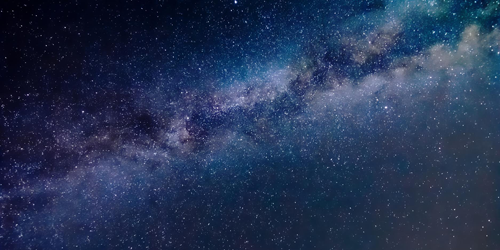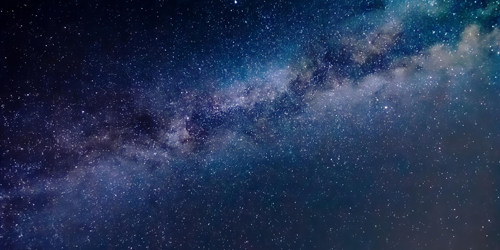Cosmic Test of Quantum Mechanics
Quantum mechanics predicts that two particles can be so closely connected (entangled) that measuring the state of one appears to instantly affect the state of the other, regardless of how far apart the particles are. In 2015, scientists cemented this “action-at-a-distance” prediction by simultaneously closing two loopholes that undermined it (see 16 December 2015 Viewpoint). But another loophole remained ajar: some unknown outside influence could be altering the experiment’s settings to fix their outcome. Now researchers have addressed this loophole by preparing randomized measurement settings using light from stars in the Milky Way.
Action-at-a-distance, or nonlocality, is verified via Bell tests, which typically measure the polarizations of two entangled photons separated by some distance. Issues with the design and execution of experiments could influence the outcome, a possibility eliminated in the 2015 experiments. But what if some other outside factor, as yet unknown, had manipulated the experimental settings or tipped off the source of entangled particles as to what the settings would be? To test this possibility, David Kaiser from the Massachusetts Institute of Technology, Cambridge, Anton Zeilinger from the Institute for Quantum Optics and Quantum Information in Vienna, and colleagues replaced the laser-based quantum random number generators typically used to assign experimental settings (see 16 December 2015 Synopsis) with “cosmic setting generators”—random number generators that use light from stars to keep the settings unpredictable.
The experiments performed by the group produced results consistent with nonlocality, ruling out outside control, at least over the 600 years it took the starlight to travel to Earth from the closest star they used. Anything trying to engineer the outcome of this experiment would have had to act prior to the photon leaving that star. The researchers suggest that light from more distant galaxies or radiation from the cosmic microwave background could be used to push this time frame back even further.
This research is published in Physical Review Letters.
–Katherine Wright
Katherine Wright is a Contributing Editor for Physics.





